To mark the anniversary of the day – 19th December 2003 – that the £45 million Beagle 2 spacecraft was successfully deployed from the Mars Express Orbiter, many of the original team gathered in the Science Museum yesterday to discuss how to capture the remarkable legacy of the mission.
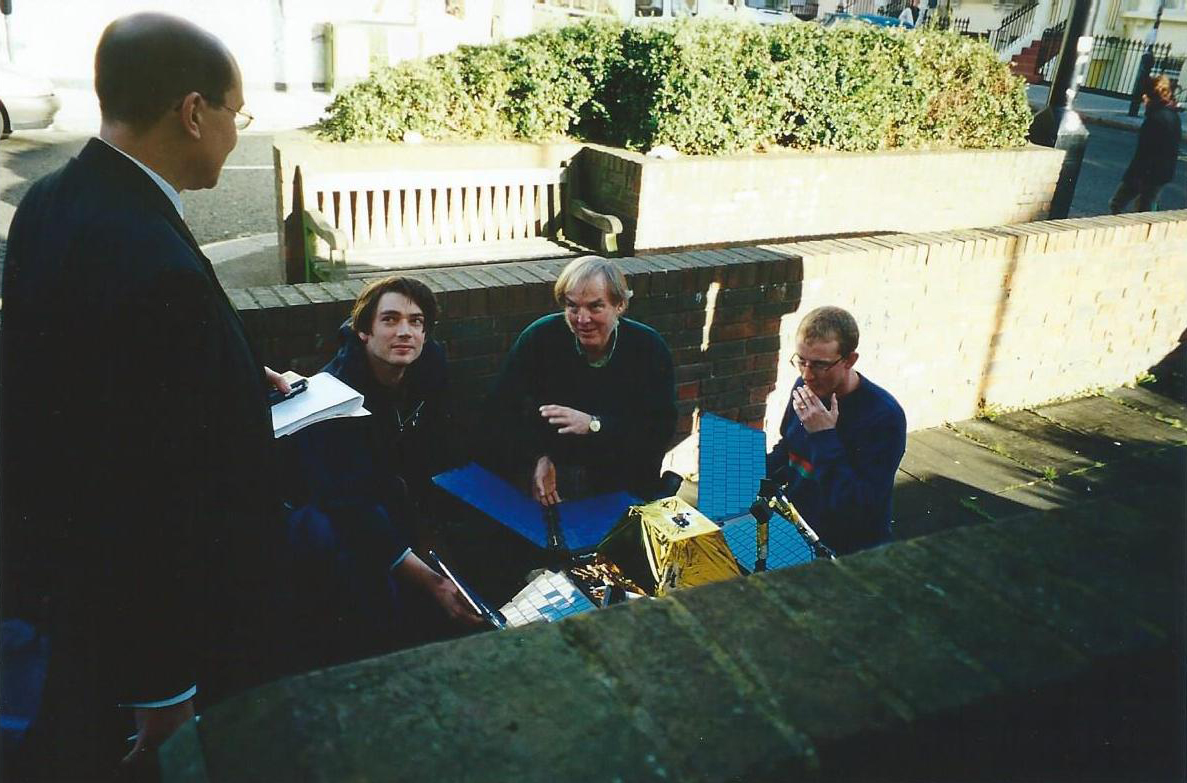
A re-evaluation of its historic significance has come in the wake of revelations three years ago that indicate Beagle 2 was the UK’s – and Europe’s – first mission to land on another body in our Solar System.
After its launch in June 2003, the expected radio contact following landing on Christmas Day 2003 never came. After four months and 24 attempts at communication, via NASA’s Mars Odyssey and ESA’s Mars Express orbiters, the lander was declared lost to the huge disappointment of the mission team led by Colin Pillinger, the visionary Open University scientist.
Pillinger managed the rare feat of combining research with a flair for show business, striking a very British pose with his daunting sideburns and West Country burr, along with the heft of a scientist who had done important work on Mars meteorites.
In 1997 he persuaded the European Space Agency (ESA) to include a lander in its Mars Express mission, then had to convince a foot-dragging UK government and bureaucrats to underwrite the project’s £45 million costs, even though they were a fraction of those for rival NASA missions. Rather than use a dry acronym, he named the little probe after HMS Beagle, the vessel that carried Charles Darwin.
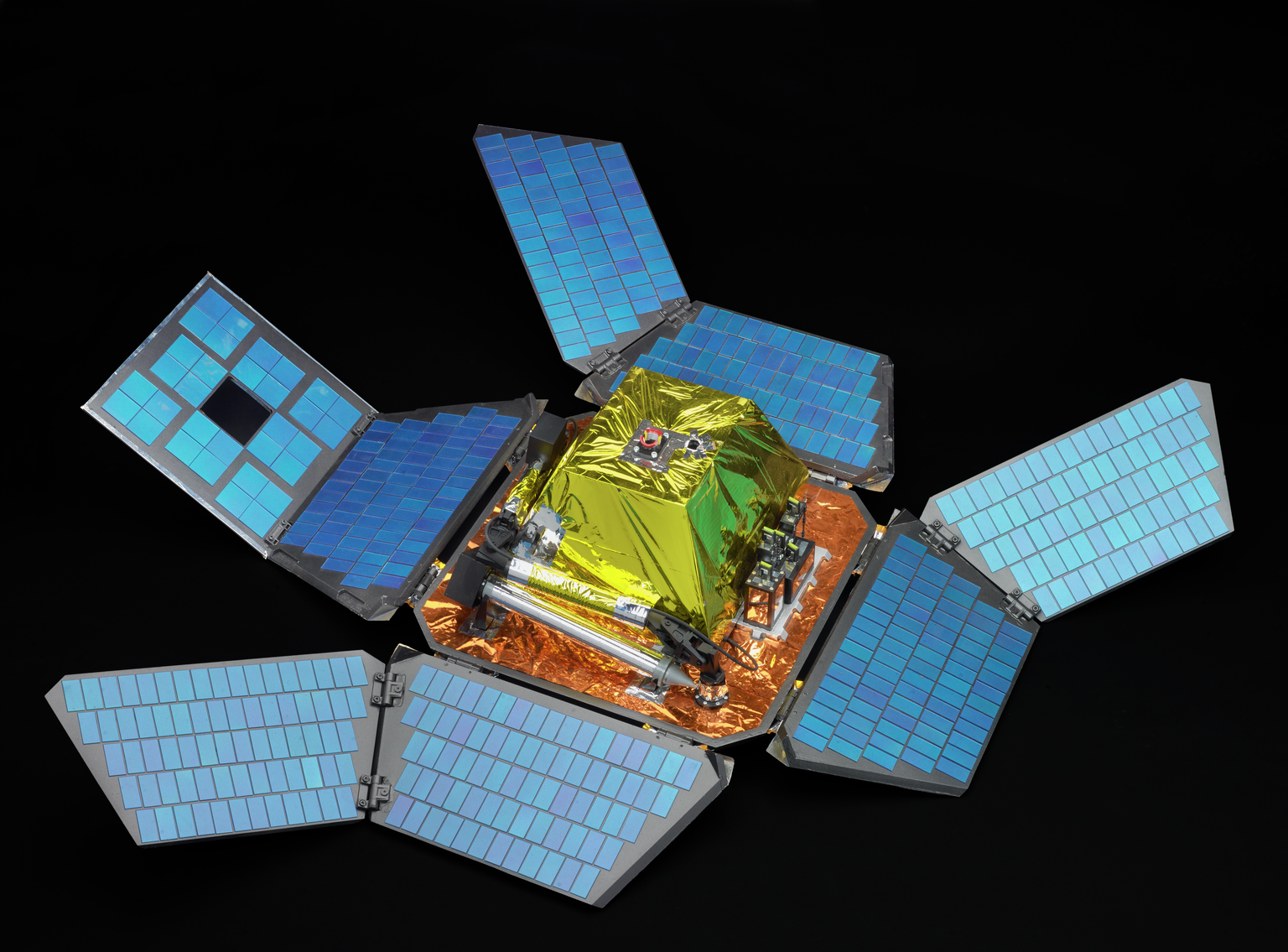
He rustled up the support of industry too. At yesterday’s meeting, Mike Rickett, then of Matra Marconi Space, described a meeting where someone piped up, ‘It’s a long shot but I know this mad professor who wants to go to Mars on a shoestring!’
When he wanted to show the press how compact Beagle 2 was, Colin Pillinger wheeled a replica through the Open University car park in a supermarket trolley. To drum up more publicity, he enlisted the help of artist Damien Hirst to use his iconic spots as a special instrument calibration chart on the spacecraft.
And he nagged Dave Rowntree and Alex James of Blur – then the epitome of Cool Britannia – until they agreed to promote the mission (I met them all for a photo session next to a London recording studio two decades ago, to report on their support for The Daily Telegraph), and even to compose the call sign for Beagle 2.
But the call sign was never received. The meeting was told by Beagle 2 team member Chris Lee, now of the UK Space Agency, how his family remembered 2003 as ‘the Christmas that never happened’ and that he ‘just sulked’ as it dawned on him and the rest of the Beagle 2 team that the probe had been lost.
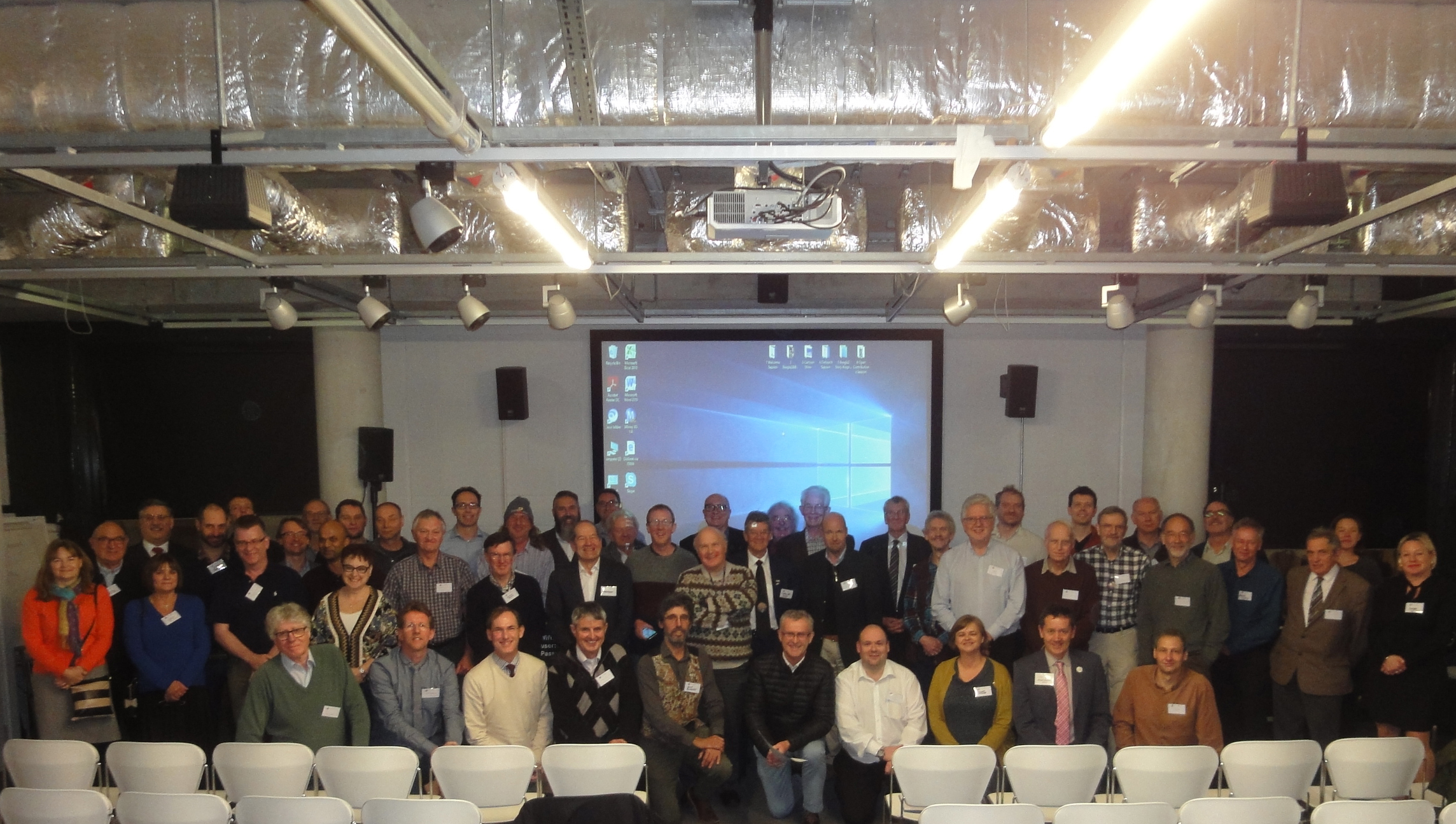
Colin Pillinger died in 2014 thinking that he had simply left a dent in the red planet, though he always maintained that everything could and should have worked.
However, even then, many remarked on how he had succeeded, against the odds, in launching a mission to Mars that had enthused a sceptical British public about space.
As Lee told the meeting, Beagle 2 is now recognised as ‘pretty unique’ for many reasons, from its ‘remarkable alumni’ to how it paved the way for a more entrepreneurial approach to funding missions.
Beagle 2 helped lay the foundations of subsequent space efforts, from the formation of the UK Space Agency and ExoMars Rover 2020 (described to the meeting by Richard Slade of EADS Astrium) to the UK’s first ESA astronaut Tim Peake, who was unveiled in the Science Museum in 2013, and galvanised outreach at the National Space Centre, as described yesterday by Alan Wells, former chairman.
Because of its historic importance, said Lee, the resting place of Beagle 2 on Mars should be designated a ‘UK heritage site.’
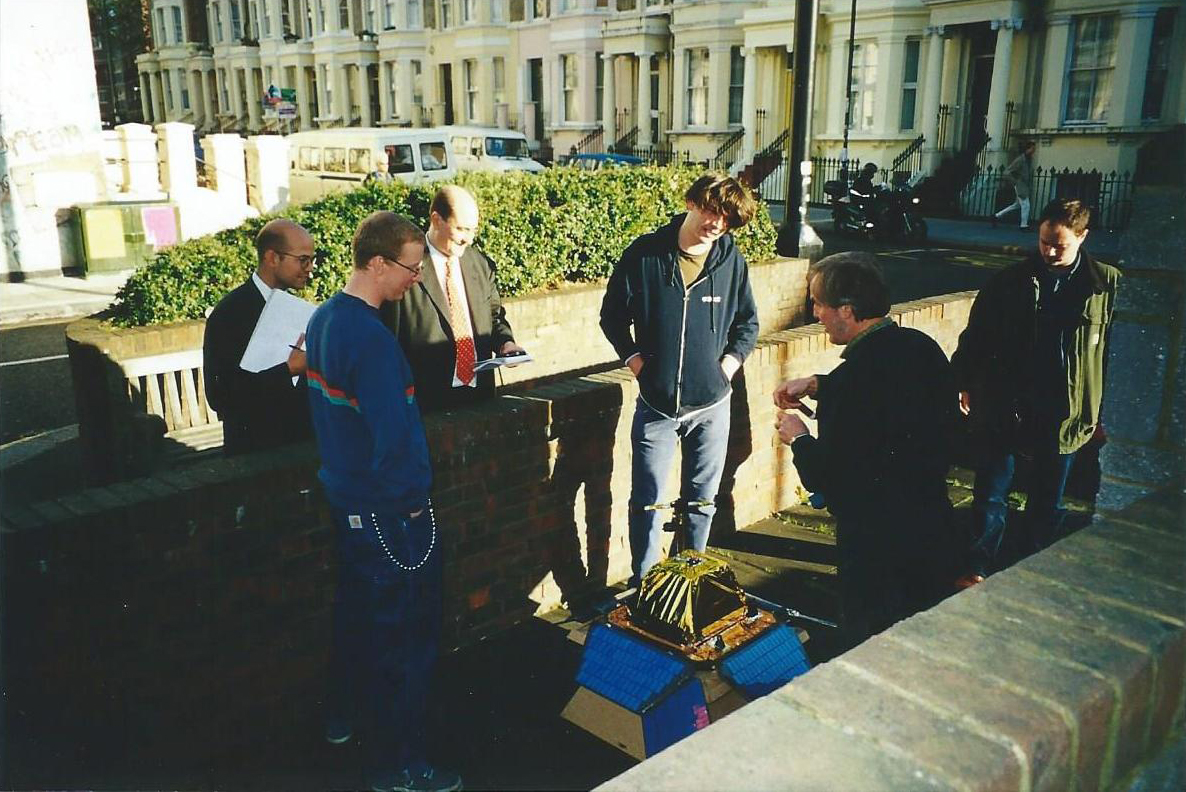
The reason dates back to late 2014 when Michael Croon, an original member of ESA’s Mars Express team, spotted a glinting object on the surface of Mars in an image taken by the Mars Reconnaissance Orbiter HiRISE camera, which can resolve features as small as a coffee table on the planet’s surface. More than a decade after being declared lost, the discovery of Beagle 2 was announced on 16th January 2015.
Among those who gathered with the Beagle 2 mission members in the museum yesterday was his widow, Judith Pillinger of the Open University, who thought it was a shame that the legacy of the mission had not been captured because it had never generated any scientific data, which the Science Museum now hopes to remedy.
A team led by Prof Mark Sims of the University of Leicester and Jim Clemmet, former Beagle 2 Chief Engineer, with other colleagues in the University of Leicester, De Montfort University, UCL, last year published a detailed analysis of the fate of Beagle 2 in the Journal of the British Interplanetary Society (JBIS), along with the Royal Society Open Science journal.
‘It was an engineering success and although it did not return scientific data from Mars the instrumentation is being developed for a wide range of uses,’ the team said.
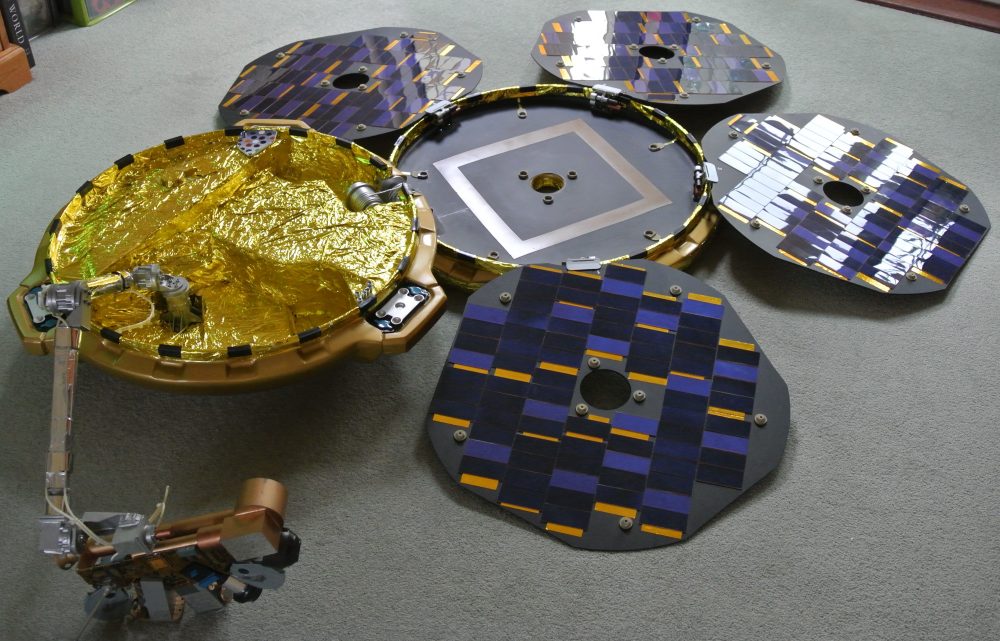
The JBIS paper listed evidence that the pixelated HiRISE images were indeed Beagle 2, working out from the size, reflectivities, colour, location and dispersion on the surface and then using virtual modelling to simulate and confirm the HiRISE images.
Based upon these analyses, an impressive list of mission successes has been notched up because it is clear that, as planned, Beagle 2 did survive the harrowing entry, descent and landing sequence and successfully deployed its parachute and gasbags to “bounce down” on the Martian surface.
An ESA enquiry had placed emphasis on collision between the back cover and the main parachute, failure of the ultra-lightweight main parachute or failure of airbags and potential entanglement of the parachute and airbag during bounces.
We now know none of the above proposed mission failures actually occurred and Beagle 2 got close to the end of the sequence from wake-up to readiness for surface operations, which was composed of 78 individual tasks, conditions and events, such as the simultaneous release of three heatshield pyrotechnic release bolts.
In the HiRISE images the lander’s main parachute can be seen 100m away from the front heatshield and lander, and the lander’s rear cover and drogue parachute appeared to be still attached to the probe’s rear body. The airbags have still not been located but, due to their colour, are less likely to feature.

The probe was spotted inside its target landing area in the Isidis Planitia region of Mars, about 3 miles (5 kilometres) from the heart of its target landing zone. ‘We did land on Mars,’ said Clemmet.
The probe, a model of which can be seen in the Science Museum Exploring Space gallery, looked like a giant pocket watch, with a protective outer casing that would unfold four solar panels so Beagle 2 would get to work to hunt for signs of possible life on Mars and characterize Martian geology, weather and climate.
To transmit and receive signals, the UHF antenna embedded in Beagle 2’s lid required all solar panels to deploy successfully. One possible cause of failure is that Beagle 2 appeared not to have all of its four solar arrays deployed. However, the HiRISE images are not clear enough to be sure, since it would be difficult to see the reflection from the fourth panel due to the direction the panel was facing, said Clemmet.
Unless we find a way to communicate with it, or indeed send another probe to study it, ‘we may never know whether it is a broken wire, a structural distortion, a hang-up or a flat battery or one of the many other scenarios’.
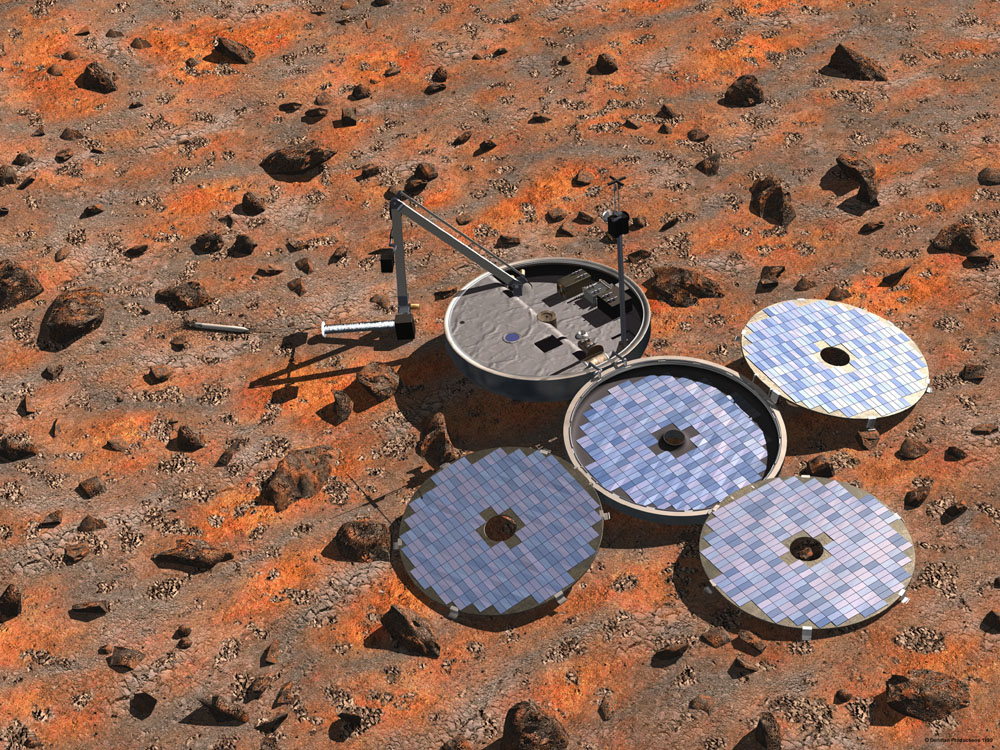
The first Transformers film, in 2007, had suggested that Beagle 2 had been trampled by a Decepticon (much to Colin Pillinger’s delight). Although not possible to identify the cause for the loss of mission, the JBIS article concluded ‘Beagle 2 is the UK’s and Europe’s first mission to land onto the surface of another body in our Solar System’.
Beagle 2 ‘is just sitting there waiting to go,’ the meeting was told by Prof Ian Wright of the Open University. Wearing his Beagle 2 hat, Prof Wright contrasted Beagle’s partial success with the failure of the ESA/Russian Schiaparelli EDM lander that crashed on Mars in 2016 – even with the resources of ESA, landing on the Red Planet is ‘very difficult’.
Science Museum curator Doug Millard said, ‘Beagle 2 was always a highly significant mission that needed to be represented in our Exploring Space gallery – its successful landing on Mars only adds to its importance’.
Millard added that it was now vital to document the mission, which was discussed at the meeting by Beata Bradford of the Science Museum Group’s National Collections Centre, Wroughton.
Yesterday’s Science Museum meeting was ‘nostalgic as well as formative’, commented Prof John Zarnecki, who has taken part in several high-profile space probe missions.
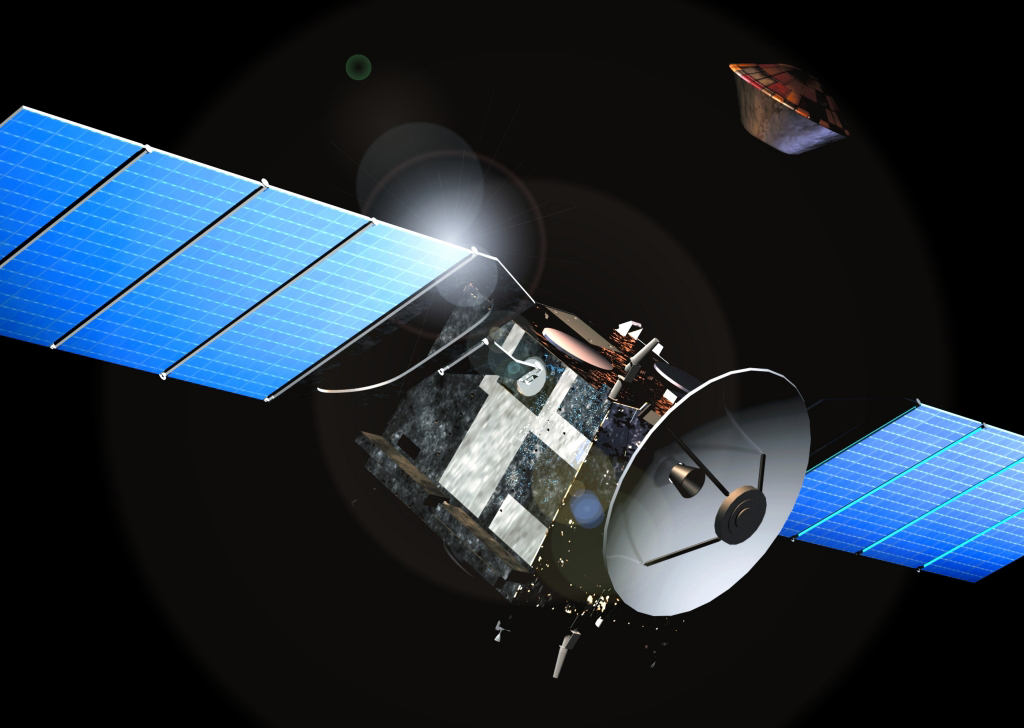
He remembered how his own contribution to Beagle 2 was funded by ‘creative accounting’ and the day Colin Pillinger was asked for his autograph in a Tesco petrol station and it dawned on him that, when it came to inspiring the public with space exploration, ‘he really must have made it’.
Late 2003/early 2004 was a busy time for Mars landings. NASA’s Spirit and Opportunity rovers touched down weeks apart in January 2004, on three-month missions to search for signs of past water. Spirit stopped communicating with Earth in March 2010, while contact was lost with Opportunity as of June 10, 2018.
Prof Mark Sims closed the meeting by reminding everybody that 15 years ago the team had done something truly extraordinary and had landed a probe on Mars, ‘even though they didn’t know at the time’.